#voter registration art
Note
Hi there! I confirmed I'm registered to vote, and I appreciate your mission to get more people voting. If/when you get the chance to, I'd like to see Wonder woman or Korra (Avatar)! (Idk too much about dc comics but I too love buff women) 💕🌟

Thank you for registering!
#pentapoda drew this#korra#avatar the last airbender#legend of korra#voter registration art#thank you for registering!
48 notes
·
View notes
Text

➡️ How to register or check your voter registration
https://www.rockthevote.org/how-to-vote
➡️ Find your polling location
https://www.vote.org/polling-place-locator
➡️ Find out what’s on your local ballot
https://ballotpedia.org/Sample_Ballot_Lookup
#vote#voting#voter registration#trans rights#healthcare#public health#please vote#tw: politics#tw politics#art#illustration#floral#flowers#signs#protest#human rights#current events#lgbtq#politics#political#america#american politics#us politics#usa politics#voter#vote early#election#elections#important#boost
4 notes
·
View notes
Text
twitch_live
Come hang out with me while I help folks register to vote! Deadlines are coming up fast!
Or, just come and say hi! There will most likely also be crocheting involved... Can also be your pre-game for the Geeks and Nerds call!
0 notes
Text
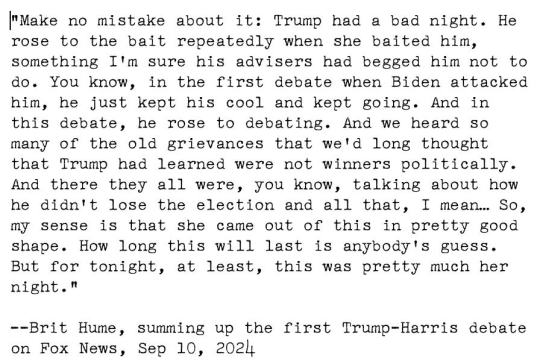
* * * * *
LETTERS FROM AN AMERICAN
September 10, 2024
Heather Cox Richardson
Sep 11, 2024
Former president Trump has always approached debates as professional wrestling events in which the key is not to explain policies or answer questions, but rather to demonstrate dominance over your opponent. In 2016 the Democratic nominee, former secretary of state Hillary Clinton, had a hard time countering this strategy effectively because of the many expectations of what was appropriate behavior for a female presidential candidate. In 2020 and then again in the June 2024 “debate,” Democratic candidate Joe Biden’s stutter made it difficult to counter Trump’s scattershot attacks.
The question for Democratic presidential nominee Vice President Kamala Harris in tonight’s presidential debate was not how to answer policy questions, but how to counter Trump’s dominance displays while also appealing to the American people.
She and her team figured it out, and today they played the former president brilliantly. He took the bait, and tonight he self-destructed. In a live debate, on national television.
The Harris campaign began the day trolling Trump with a new campaign ad featuring the pieces of former president Barack Obama’s speech at the August Democratic National Convention that concerned Trump. “Here’s a 78-year-old billionaire”—the ad cuts to a photo of Trump in a golf cart—“who has not stopped whining about his problems.” Then a clip of Trump shows him complaining about Harris’s crowds, before Obama notes Trump’s “weird obsession with crowd sizes,” complete with Obama’s hand motion suggesting Trump’s sizes were small. “It just goes on, and on, and on,” Obama says, before the ad shows empty seats and people yawning at Trump’s rallies.
“America’s ready for a new chapter,” Obama says to the overflow crowd cheering at Chicago’s United Center during the Democratic National Convention. “We are ready for a President Kamala Harris!” At the end, even Harris’s standard statement, “I’m Kamala Harris and I approved this message,” sounds like a challenge.
This morning, the Harris campaign began running the ad on the Fox News Channel.
At the same time, they began running Philadelphia-themed ads across the city on billboards, in the Philadelphia Inquirer, and on food trucks and taxi cabs, sidewalk art, and digital projections making fun of Trump’s fascination with crowd sizes. They showed, for example, a full-sized Philadelphia pretzel labeled “Harris” alongside a piece of one that looked like an upside down U labeled “Trump.”
The taunting might have been behind Trump’s demand for loyalty from Republican lawmakers this afternoon, telling them to shut down the government if he doesn’t get his way on the inclusion of a voter suppression measure in the bill to fund the government. The right has often relied on threats of government shutdowns to try to get their way, but such shutdowns are never popular, and even moderate Republicans are leery of launching one just before an election.
Nonetheless, Trump tried to lock them into such a shutdown, reiterating in a post this afternoon the lie that undocumented immigrants are voting in presidential elections. “If Republicans in the House, and Senate, don’t get absolute assurances on Election Security, THEY SHOULD, IN NO WAY, SHAPE, OR FORM, GO FORWARD WITH A CONTINUING RESOLUTION ON THE BUDGET. THE DEMOCRATS ARE TRYING TO ‘STUFF’ VOTER REGISTRATIONS WITH ILLEGAL ALIENS. DON’T LET IT HAPPEN—CLOSE IT DOWN.”
Throughout the day, the Harris campaign placed posts on social media showing Harris looking crisp and presidential and Trump looking old and unkempt. And then, for ten minutes in the hour before the debate, the Harris campaign held a drone show over the Philadelphia Museum of Art showing campaign slogans and then turning the words “MADAM VICE PRESIDENT” into “MADAM PRESIDENT.”
Hugo Lowell of The Guardian reported today that Trump’s advisors were concerned ahead of the debate about whether they would get “happy Trump” or “angry Trump,” worrying that a frustrated Trump would engage in the vicious personal attacks that turn voters off. They expressed relief that having the microphones muted when it was not a candidate’s turn to speak would prevent Harris from irritating him with fact checks and snark of her own. Conservative lawyer George Conway noted that it was “[i]nteresting how one campaign is extremely concerned about the emotional stability of its candidate, and how the other is not.”
Harris’s attacks on Trump, including her campaign’s subtle digs at his masculinity, appeared to have accomplished what they set out to. When the two came out on stage, he went straight to his podium, while she strode across the stage, moved into his space, held out her hand, introduced herself and wished him well: “Kamala Harris. Have a good debate.” He muttered in response, “Nice to see you.” Then she took her own spot at the podium. When the debate opened, it was clear that Harris was the dominant figure and that her opponent was “angry Trump.” He would not look at her during the debate.
In her first answer, Harris tried to set out both her own story as a child of the middle class and how she intended to build an opportunity economy for others, lowering food and housing costs and opening the way for more small businesses. It was a lot, quickly, and she looked a little nervous.
Then Trump spoke and it was clear he was going off the rails. His first comment was to suggest Harris was lying, and then to insist that his proposed tariffs will solve everything, although he has the way tariffs work entirely backward: they are paid by the consumer, not by foreign countries. As he followed with a long list of his rally lies, Harris started to smile.
From then on, he continued to produce rally stories full of wild exaggerations and attack Harris with lies in what CNN fact-checker Daniel Dale called “a staggeringly dishonest debate performance from former president Trump.” "No major presidential candidate before Donald Trump has ever lied with this kind of frequency,” Dale said. “A remarkably large chunk of what he said tonight was just not true. This wasn't little exaggerations, political spin. A lot of his false claims were untethered to reality." As Harris spoke directly to the American people, growing stronger and stronger, Trump got wilder and angrier and told more and more crazy stories.
And then, about ten minutes into the debate, Harris baited him. She invited the American people to go to one of his rallies, where “he talks about fictional characters like Hannibal Lecter, he will talk about ‘windmills cause cancer.’ And what you will also notice is that people start leaving his rallies early out of exhaustion and boredom.”
Trump lost it. He defended his rallies, said Harris couldn’t get anyone to attend hers and has to bus in attendees (in reality, her rallies are packed and he is the one who reportedly hires attendees), and then, in his fury, repeated the lie about immigrants eating pets. When a moderator fact-checked that story, he fought back, saying he heard it on television.
And from then on, Harris kept baiting him while explaining her own policies directly to the camera, and he took the bait every single time. He ran down every rabbit hole and appeared unable to finish a thought. Notably, he refused to say he would not sign a national abortion ban and admitted that after nine years of promising one, he had no health care plan (he has, he said, “concepts of a plan,” and if they pan out, he’ll let us know in the “not too distant future”).
He threatened World War III and repeated that the U.S. is “a failing nation.” He told a long story about threatening “Abdul,” the leader of the Taliban; in fact, the leader of the Taliban since 2016 is Mullah Hibatullah Akhundzada. In response to Harris’s statement that foreign leaders thought he was a disgrace, Trump answered that Hungarian prime minister Viktor Orbán, who destroyed his country’s democracy and replaced it with a dictatorship, says he’s a good leader. New York Times columnist David French wrote: “It's like she's debating MAGA Twitter come to life.”
The debate moderators, David Muir and Linsey Davis of ABC, asked solid questions and corrected the most egregious of Trump’s lies. But as he continued to interrupt and yell at Harris, they increasingly gave him leeway to do so. This meant he spoke more often and for more time than Harris; MSNBC’s Stephanie Ruhle reported that he spoke 39 times for a total of 41.9 minutes, to her 23 times for a total of 37.1 minutes. But the extra time did him no favors.
By the end of the evening, Harris had delivered a clear message about her hopes to move the country forward beyond years of using race to divide people who have far more in common than they have differences. She promised to develop an economy that will build small businesses and support a growing middle class, while protecting rights, including the right to make reproductive decisions without the intrusion of the state. And she showed the nation that Trump can be baited, that he lies freely and incoherently, and—perhaps crucially—that he is no longer the dominant politician in America.
Immediately after the debate, the Harris campaign continued their demonstration of dominance. Harris-Walz campaign chair Jen O’Malley Dillon released a statement recapping Harris’s strength and Trump’s angry incoherence. She concluded: “Vice President Harris is ready for a second debate. Is Donald Trump?”
Then things got even worse for Trump.
Music phenomenon Taylor Swift endorsed Harris, telling her 283 million Instagram followers that she felt she had to because of Trump’s earlier reposting of an AI image of her seeming to endorse him. That, she said, “brought me to the conclusion that I need to be very transparent about my actual plans for this election as a voter. The simplest way to combat misinformation is with the truth. I will be casting my vote for Kamala Harris and Tim Walz in the 2024 Presidential Election.”
After explaining why she was supporting Harris and Walz and urging her fans to do their own research, Swift signed off: “Taylor Swift, Childless Cat Lady.”
LETTERS FROM AN AMERICAN
HEATHER COX RICHARDSON
94 notes
·
View notes
Note
Can you please say more about the Lanterns' politics?
I am so glad you asked me about this because I've been thinking about it since I reblogged that post but also I'm definitely about to get yelled at lol. ANYWAY THIS IS GOING TO BE LONG.
Tl;dr: John is the only one with a coherent political position or an up-to-date voter registration.
Hal:

So something interesting about Hal is that his stories are often very political but his character is not. With one extremely obvious exception, he rarely talks about politics; rather, he serves as a means through which to tell political stories, usually unintentionally.
What do I mean by that? Well, for example, in the Silver Age, his love interest would occasionally be possessed by a misandrist space jewel that would force her to attack him, but always lose because women are inherently inferior to men and prefer to be subjugated by them anyway. That's the original Star Sapphire concept. It's wildly misogynistic, but it doesn't mean Hal the character is misogynistic. But it's also a very political story, even if I don't think the writer was deliberately trying to make a point so much as...being an average, thoughtlessly sexist guy living in the 60s. (Carol continues to be the subject of mindbogglingly sexist writing and art well into the 2000s. Fucking comics.)
And so you have Hal Jordan, whose love life was ruined by his girlfriend getting promoted above him and who called his best friend by a racist nickname for decades; Hal Jordan, poster boy for chest-thumping post-9/11 kneejerk patriotism; Hal Jordan, lightning rod for a certain kind of regressive bigoted fanboyism. Choosing Hal as the Lantern for a particular story over John or Kyle has come to signify something very specific, but none of that is necessarily reflective of what Hal himself believes.
So what about Hal himself? Well, when we first meet him, he's the epitome of privilege: a white, straight, cis, Christian (I know he's canonically half-Jewish now but that's only as of the past decade or so), ablebodied, upper middle class (Geoff Johns retconned him to have a working class background, but in the Silver Age, he had one uncle who was a millionaire, another who was a judge, and a successful politician brother) man with a flashy job. Privilege tends to lean Republican; even if he is from California, I suspect Hal voted for Eisenhower in 1956.
In GL/GA, the word "Republican" isn't used to my recollection, but Hal is definitely presented as...I'm going to say conservative by I mean lower-case C. He doesn't have deeply held political beliefs, but he's traditional. He doesn't question the system, because he's never had to. He resists things that challenge the way he's always understood the world works, and that's very relatable - most people do! And he will absolutely argue with Ollie, who certainly isn't always right about everything. But he's also willing to listen, and have his mind changed, and certainly reachable via appeals to compassion and fairness.
Once the "relevance" trend of the late 60s-early 70s was over, Hal's stories default back to ostensibly politically neutral, although obviously nothing is actually politically neutral. In the late 80s and early 90s he's the most unpleasant version of himself, and that has political manifestations, like when he allows John to be imprisoned in apartheid South Africa for a ridiculous and unnecessary crime Hal himself committed. It's extremely fucked up, but again, it's less because of Hal's actual opinions and more because Christopher Priest wanted to write about apartheid, even if it does make Hal look incredibly, horrifically racist.
Then jump to the mid-2000s and Green Lantern: Rebirth, and you might imagine that losing his hometown, getting possessed by a giant space bug, becoming a supervillain, dying, and becoming the embodiment of God's vengeance might have some effect on Hal's politics, but that is not what Geoff Johns is here to write. Johns is writing a Hal who teleported in from, like, 1967 - no nuance allowed. He's a summer blockbuster that walks like a man. He's a Baja Blast. He's never had a coherent political thought in his life. In his defense, he has had more and goofier concussions than any superhero I can think of and his brain is smooth like an egg. Still.
Anyway, all of this is to say that I think Hal tends to default to center right positions but can be easily coaxed over to center left. That said, he has never not once in his life had his shit together enough to vote in a single election, not even for his own brother.
Guy:

So Guy's deal is a little bit complicated because his most vocally political era was also in part due to severe and personality-altering brain damage.
When Guy was originally introduced in the 1960s, he had the pleasantly bland personality of all superheroes. Many years later, he suffered a series of major injuries, torture, and a lengthy coma, and he emerged from the coma in 1985 with the aggressive, abrasive personality he's best known for today. Justice League International took that even further, using him to parody the jingoistic, red-blooded American action hero of the 80s.
This version of Guy is a vocal fan of Ronald Reagan and despises the USSR. He's pro-war, proudly xenophobic, and treats women badly enough that it crosses the line into repeated sexual harassment, both physical and verbal. (To be fair...ish, this last also applies to Wally West and arguably a number of other men, and was always played for laughs. It was gross all around.)
Again, this is partially a manifestation of his brain damage. There's also a running gag in JLI where if he gets hit on the head, his personality changes to this cloying, timid, gentle one, sort of halfway between a child and a flamboyant gay stereotype. Hit him again and he goes back to Asshole Guy. I'm not going to pretend I don't find some of the gags funny, but it's obviously all highly problematic, and not just from a medical standpoint.
That said, I don't think we can dismiss Guy's politics or his usual personality as simply a manifestation of brain damage. We see in later flashbacks that he developed the abrasiveness as a defense mechanism from growing up in an abusive home, and as he matures through the 90s, he doesn't actually become a significantly different person, even after his Vuldarian healing factor kicks in and heals his brain. (It's a thing.) I think it's more accurate to say that the brain damage probably affected his impulse control, his filter, and arguably even his paranoia levels.
All of which is to say that as much as I would love to go "Guy's better now, so he's not a Republican!"...that dog won't hunt. I think a really good canon writer could make the case that Guy is pro-union-style working class and also a former teacher so he's at least center left, but as of now canon evidence is pretty firmly on the red side. It doesn't help that the GLC has been written as fetishistically pro-cop and pro-military since Johns got his grubby hands all over it. I will happily ignore the New 52 retcon that Guy was a cop, and you could even try to argue that he dislikes cops because his brother was a corrupt cop who became a supervillain, but I think it's much more likely that he identifies with cops as a Corps member. Although I don't think he would have any patience for killer cops. ("You were afraid for your life even though you were the only one with a weapon? Then fucking quit, coward.")
All of that said, I think Guy is similar to Hal: defaults to center right, can be talked into center left on certain issues but he's more stubborn about it. (They would also both be enraged by Jan 6 and disgusted by the current Republican party - I can't quite argue that Guy Gardner is a Democrat but Green Lanterns don't have any patience for traitors or cowards.) It's also kind of a moot point because he never knows what is happening on Earth and hasn't voted since his pre-coma days.
John:
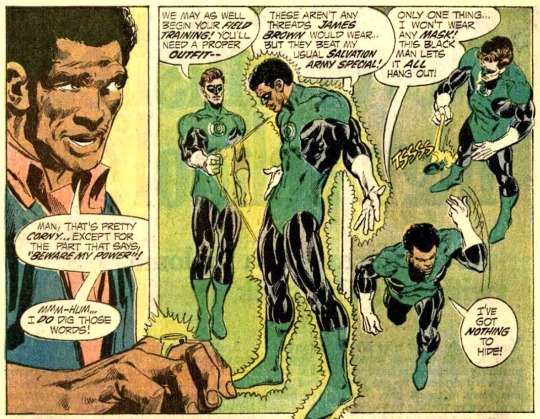
Oh John Stewart, thank god for you.
John was introduced as an explicitly political character in an explicitly political story. The first time we see him, he's stepping in to defend Black men from a white cop, citing his own knowledge of the law to do so. He shows a much more perceptive and informed perspective on the issue's main plot (a racist senator running for president) than Hal does. Even in the little moment above, we see that he's sensitive to exactly what it means for him, a Black man, to be taking on this role.
None of this is a surprise, since we'll later learn that John's parents were civil rights activists. Not only would he not have had the privilege Hal and Guy did to assume his existence was politically neutral, he was explicitly educated about political realities and progressive advocacy from childhood. He's well-informed, he's passionate, and he's going to tell you when you are being fucking stupid.
John isn't immune from the GL cop/military...thing, although I can't blame Johns for that - it was the cartoon that made him a Marine, and the comics followed suit. But that's never outweighed his origin or his upbringing. Like, he's friends with the DCU's fictional version of Nelson Mandela.
This one is straightforward: John is a staunch progressive. He is, however, in outer space 90% of the time, so he's always at least a little bit out of date. I imagine every time he comes back to Earth he spends the first 24 hours watching the news in abject horror.
Kyle:

Kyle doesn't talk about politics a lot, but when he does, he lands pretty much where you'd expect a young California-born artist living in New York City to land: to the left. My read on Kyle is that he hasn't really thought any of his politics through, which makes sense - he's a character who is led by emotion over reason every time. He doesn't have John's carefully thought-through arguments or knowledge of the law behind him. I feel like when something political upsets him, he's more likely to splutter angrily than make a coherent argument (which: same). When he's given the time to think things through and speak from the heart, though, he can be very eloquent, like in his speech to Terry after Terry accidentally comes out to him.
It's also worth pointing out that his solo appearances were mostly in the 90s, which were prone to avoiding politics or only addressing them in a halfhearted both sides-y way like the story above.
That said, I don't think he ever actually does anything about his political opinions. He never votes in midterm or primary elections, and probably only voted in a presidential one because Alex dragged him along one time. I feel like Donna tried to do the same when they were dating and that was when Kyle realized he'd forgotten to change his voter registration from California to New York. Jennie wasn't responsible enough to Mom him into doing his civic duty, and he's been in space pretty much nonstop ever since, so...
Simon:

In that other post, I said Simon's experiences should have radicalized him, but instead he was created by Geoff Johns. Simon is a Muslim, Lebanese-American man who came of age in the post-9/11 era, and was wrongfully convicted of terrorism and waterboarded at Guantanamo Bay. His reaction to this was...to put on a ski mask and wave a gun around. Like, it's been a while since I've read these issues, but aside from the "ripped from the headlines!!!" of it all, I feel like Simon's experiences largely don't inform his actions or perspective except that he's super angry (fair enough).
The thing about Simon (and Jessica) is that he hasn't been around very long, and most comics don't have characters directly expressing political opinions. It's not a coincidence that these characters are in chronological order and each write-up is shorter than the last. I can think of about three times where Kyle has ever said anything I can interpret as political, and he's been around for 30 years. Simon only has a third of that history. So while one could certainly extrapolate what Simon's opinions are likely to be, I can't think of any canon where he actually says them.
Jessica:

Jessica has even less to go on in terms of explicitly political comics. You'd think she wouldn't like guns because of what happened to her friends, but she has one of her own and doesn't seem bothered by Simon's. I'd imagine she has opinions on immigration as someone whose family is from Mexico and Honduras, but it never comes up. If I were writing for DC, I'd make both Simon and Jess leftists, but as for actual canon proof? I got nothing.
I will say that she probably avoids political discussions because anxiety, and I bet she got really good at voting by mail during her years not leaving the house. She probably votes by mail from space. Maybe John's not the only one with an up-to-date voter registration.
Kilowog:
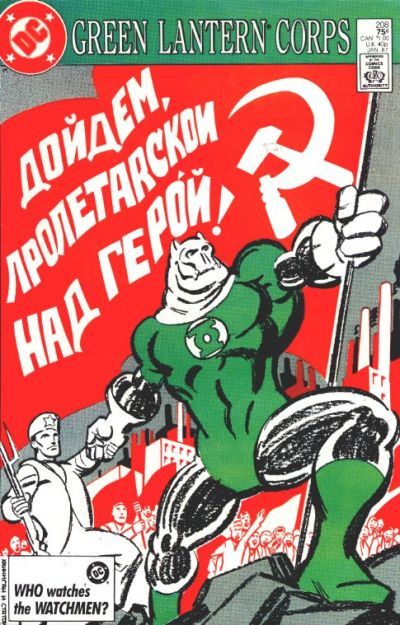
132 notes
·
View notes
Note
I've been thrilled to watch the groundswell of volunteers going out to fight for Kamala Harris. I'd really like to join the effort, but I have an issue:
I live abroad. I'm a US citizen, registered in my NJ hometown for an absentee ballot, but I live in Tel Aviv-Yafo, Israel.
That means door knocking isn't an option, and phone calls or postcards are prohibitively expensive. And of course we hardly have a Democratic Party HQ here (to my knowledge).
What can I do? I sent the instructions for absentee voter registration to a few fellow American-Israelis, but I'm lost where to go from here. There must be virtual events, or a need for, say, art or writing? I'm grasping at straws over here.
I'm of course also open to helping Palestinian-Americans who are living in Israel/Palestine. The Jerusalem US consulate serves not only Israel but the West Bank (and Gaza under normal circumstances), I believe.
Hi there-- I'm honored to be asked! Phone and text banking are all done online, not using your actual phone number, so that may be a good option for you, though the time difference could be a factor as most text and phonebanks are now scheduled (unlike the olden days, when it was basically all day every day from like 9a-9p.)
There are definitely groups seeking design work.
Democrats Abroad may be the best place for you to start and there is a specific page for Israel: https://www.democratsabroad.org/volunteer
You could also check out Field Team 6 (https://www.fieldteam6.org) for text and phone banking.
I would also consider simply putting up lots of informative, positive posts about Harris and the entire Dem team and amplifying the ones you find to be a way to help. There is a ton of misogynoir going on and we need everyone to work on directing the narrative to Harris's incredible achievements and inspiring plans for the country.
If you go directly to the campaign volunteer site, there are a lot of options including create content, reach out to people I know, host a social event, share key messaging on media, which should all work for you: https://web.kamalaharris.com/forms/take-action-for-president-biden-and-vice-president-harris/?refcode=actblue_khwebsite
We can do this! When we fight, we win. And we can have a lot of FUN doing it!
14 notes
·
View notes
Note
whats antiprom btw?
so it’s this event that the libraries did, it’s like prom but more accepting for queer people. doesn’t make it an inherently queer party,but it was fun for any teens who wanted to go!
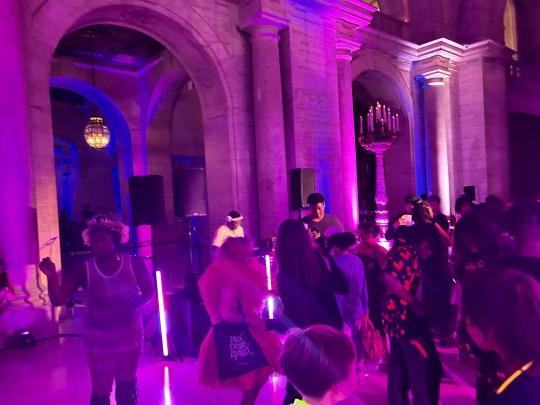
they did it in the big library branch and there was music and an arts and crafts room and snacks and book giveaways! also booths for a free city art program, teen voter registration, and on consent/sexual violence. I went with some friends from elementary school and hung out with some people I knew from the library! also met new people which was cool <3
13 notes
·
View notes
Text
Arts + Crafts Dump
I have not had a lot of time for stitching of late, thanks to a mix of my own choices, work projects, and general tiredness/burnout, but have a roundup post of everything y'all haven't seen since last September! It’s mostly cross-stitch, with a few art pieces at the end.
There won’t be proper image descriptions, just keywords; I’m sorry to those who use them but I just do not have that many words in me. =( If anyone would like more information on a specific piece, though, by all means please send me an ask and I’ll be happy to do that for you! Answering an ask is much easier for my brain than posting from scratch.
The first two images are stitchbits from my Jan 2024 winter cards, which go to select family members and close friends+coworkers.
Color-variant poinsettia triplets and five dessert-inspired patterned hearts:

Domestic rabbit, stylized poinsettia, dragonfly creek, and elegant cat:

Next up are a variety of other-cardified stitchbits. On top, an eclipse for Mother's Day plus a pi pie and fossil for (Grand)Father's Day, all from @mathysphere's patterns. On bottom from a variety of places, a lavender bunch birthday card, a blue blossom wedding card, and a blue bird w/beads for another birthday card.

The rest of the stitching is some misc stitchbits, many embellished with beads: golden retriever, tiny pink bird, cardinal, galaxy pi (also from @mathysphere!), assissi flower, heart of roses, blackwork window cat, snowy pine, and antique evergreen.

Last up are the art pieces -- two watercolor versions of a picture of the Sandias (included for reference), and a tiny marker coloring of Dale Ray Deforest's Perry Rodent lineart from my Bubonicon badge.

If you’ve made it this far, thank you for looking! Please feel free to ask me about any of these, and as always I hope you’re doing ok out there. For those of you in the US, check your voter registration status and please do make sure you've got a plan in place to vote in November. <3
5 notes
·
View notes
Text
September 10, 2024
Heather Cox Richardson
Sep 11, 2024
Former president Trump has always approached debates as professional wrestling events in which the key is not to explain policies or answer questions, but rather to demonstrate dominance over your opponent. In 2016 the Democratic nominee, former secretary of state Hillary Clinton, had a hard time countering this strategy effectively because of the many expectations of what was appropriate behavior for a female presidential candidate. In 2020 and then again in the June 2024 “debate,” Democratic candidate Joe Biden’s stutter made it difficult to counter Trump’s scattershot attacks.
The question for Democratic presidential nominee Vice President Kamala Harris in tonight’s presidential debate was not how to answer policy questions, but how to counter Trump’s dominance displays while also appealing to the American people.
She and her team figured it out, and today they played the former president brilliantly. He took the bait, and tonight he self-destructed. In a live debate, on national television.
The Harris campaign began the day trolling Trump with a new campaign ad featuring the pieces of former president Barack Obama’s speech at the August Democratic National Convention that concerned Trump. “Here’s a 78-year-old billionaire”—the ad cuts to a photo of Trump in a golf cart—“who has not stopped whining about his problems.” Then a clip of Trump shows him complaining about Harris’s crowds, before Obama notes Trump’s “weird obsession with crowd sizes,” complete with Obama’s hand motion suggesting Trump’s sizes were small. “It just goes on, and on, and on,” Obama says, before the ad shows empty seats and people yawning at Trump’s rallies.
“America’s ready for a new chapter,” Obama says to the overflow crowd cheering at Chicago’s United Center during the Democratic National Convention. “We are ready for a President Kamala Harris!” At the end, even Harris’s standard statement, “I’m Kamala Harris and I approved this message,” sounds like a challenge.
This morning, the Harris campaign began running the ad on the Fox News Channel.
At the same time, they began running Philadelphia-themed ads across the city on billboards, in the Philadelphia Inquirer, and on food trucks and taxi cabs, sidewalk art, and digital projections making fun of Trump’s fascination with crowd sizes. They showed, for example, a full-sized Philadelphia pretzel labeled “Harris” alongside a piece of one that looked like an upside down U labeled “Trump.”
The taunting might have been behind Trump’s demand for loyalty from Republican lawmakers this afternoon, telling them to shut down the government if he doesn’t get his way on the inclusion of a voter suppression measure in the bill to fund the government. The right has often relied on threats of government shutdowns to try to get their way, but such shutdowns are never popular, and even moderate Republicans are leery of launching one just before an election.
Nonetheless, Trump tried to lock them into such a shutdown, reiterating in a post this afternoon the lie that undocumented immigrants are voting in presidential elections. “If Republicans in the House, and Senate, don’t get absolute assurances on Election Security, THEY SHOULD, IN NO WAY, SHAPE, OR FORM, GO FORWARD WITH A CONTINUING RESOLUTION ON THE BUDGET. THE DEMOCRATS ARE TRYING TO ‘STUFF’ VOTER REGISTRATIONS WITH ILLEGAL ALIENS. DON’T LET IT HAPPEN—CLOSE IT DOWN.”
Throughout the day, the Harris campaign placed posts on social media showing Harris looking crisp and presidential and Trump looking old and unkempt. And then, for ten minutes in the hour before the debate, the Harris campaign held a drone show over the Philadelphia Museum of Art showing campaign slogans and then turning the words “MADAM VICE PRESIDENT” into “MADAM PRESIDENT.”
Hugo Lowell of The Guardian reported today that Trump’s advisors were concerned ahead of the debate about whether they would get “happy Trump” or “angry Trump,” worrying that a frustrated Trump would engage in the vicious personal attacks that turn voters off. They expressed relief that having the microphones muted when it was not a candidate’s turn to speak would prevent Harris from irritating him with fact checks and snark of her own. Conservative lawyer George Conway noted that it was “[i]nteresting how one campaign is extremely concerned about the emotional stability of its candidate, and how the other is not.”
Harris’s attacks on Trump, including her campaign’s subtle digs at his masculinity, appeared to have accomplished what they set out to. When the two came out on stage, he went straight to his podium, while she strode across the stage, moved into his space, held out her hand, introduced herself and wished him well: “Kamala Harris. Have a good debate.” He muttered in response, “Nice to see you.” Then she took her own spot at the podium. When the debate opened, it was clear that Harris was the dominant figure and that her opponent was “angry Trump.” He would not look at her during the debate.
In her first answer, Harris tried to set out both her own story as a child of the middle class and how she intended to build an opportunity economy for others, lowering food and housing costs and opening the way for more small businesses. It was a lot, quickly, and she looked a little nervous.
Then Trump spoke and it was clear he was going off the rails. His first comment was to suggest Harris was lying, and then to insist that his proposed tariffs will solve everything, although he has the way tariffs work entirely backward: they are paid by the consumer, not by foreign countries. As he followed with a long list of his rally lies, Harris started to smile.
From then on, he continued to produce rally stories full of wild exaggerations and attack Harris with lies in what CNN fact-checker Daniel Dale called “a staggeringly dishonest debate performance from former president Trump.” "No major presidential candidate before Donald Trump has ever lied with this kind of frequency,” Dale said. “A remarkably large chunk of what he said tonight was just not true. This wasn't little exaggerations, political spin. A lot of his false claims were untethered to reality." As Harris spoke directly to the American people, growing stronger and stronger, Trump got wilder and angrier and told more and more crazy stories.
And then, about ten minutes into the debate, Harris baited him. She invited the American people to go to one of his rallies, where “he talks about fictional characters like Hannibal Lecter, he will talk about ‘windmills cause cancer.’ And what you will also notice is that people start leaving his rallies early out of exhaustion and boredom.”
Trump lost it. He defended his rallies, said Harris couldn’t get anyone to attend hers and has to bus in attendees (in reality, her rallies are packed and he is the one who reportedly hires attendees), and then, in his fury, repeated the lie about immigrants eating pets. When a moderator fact-checked that story, he fought back, saying he heard it on television.
And from then on, Harris kept baiting him while explaining her own policies directly to the camera, and he took the bait every single time. He ran down every rabbit hole and appeared unable to finish a thought. Notably, he refused to say he would not sign a national abortion ban and admitted that after nine years of promising one, he had no health care plan (he has, he said, “concepts of a plan,” and if they pan out, he’ll let us know in the “not too distant future”).
He threatened World War III and repeated that the U.S. is “a failing nation.” He told a long story about threatening “Abdul,” the leader of the Taliban; in fact, the leader of the Taliban since 2016 is Mullah Hibatullah Akhundzada. In response to Harris’s statement that foreign leaders thought he was a disgrace, Trump answered that Hungarian prime minister Viktor Orbán, who destroyed his country’s democracy and replaced it with a dictatorship, says he’s a good leader. New York Times columnist David French wrote: “It's like she's debating MAGA Twitter come to life.”
The debate moderators, David Muir and Linsey Davis of ABC, asked solid questions and corrected the most egregious of Trump’s lies. But as he continued to interrupt and yell at Harris, they increasingly gave him leeway to do so. This meant he spoke more often and for more time than Harris; MSNBC’s Stephanie Ruhle reported that he spoke 39 times for a total of 41.9 minutes, to her 23 times for a total of 37.1 minutes. But the extra time did him no favors.
By the end of the evening, Harris had delivered a clear message about her hopes to move the country forward beyond years of using race to divide people who have far more in common than they have differences. She promised to develop an economy that will build small businesses and support a growing middle class, while protecting rights, including the right to make reproductive decisions without the intrusion of the state. And she showed the nation that Trump can be baited, that he lies freely and incoherently, and—perhaps crucially—that he is no longer the dominant politician in America.
Immediately after the debate, the Harris campaign continued their demonstration of dominance. Harris-Walz campaign chair Jen O’Malley Dillon released a statement recapping Harris’s strength and Trump’s angry incoherence. She concluded: “Vice President Harris is ready for a second debate. Is Donald Trump?”
Then things got even worse for Trump.
Music phenomenon Taylor Swift endorsed Harris, telling her 283 million Instagram followers that she felt she had to because of Trump’s earlier reposting of an AI image of her seeming to endorse him. That, she said, “brought me to the conclusion that I need to be very transparent about my actual plans for this election as a voter. The simplest way to combat misinformation is with the truth. I will be casting my vote for Kamala Harris and Tim Walz in the 2024 Presidential Election.”
After explaining why she was supporting Harris and Walz and urging her fans to do their own research, Swift signed off: “Taylor Swift, Childless Cat Lady.”
—
3 notes
·
View notes
Text
Monday, August 12, 2024 - Tim Walz
This is the ‘official’ schedule of Tim Walz s today on the campaign trail. With some added detail for press purposes. Additionally, the Governor is traveling with Maryland's Governor, Wes Moore on this trip to gain some valuable insight into the region while traveling and meeting with voters.
Governor Walz will be taking part in three events across the state of West Virginia. The Harris-Walz campaign is highly invested in the region, as we know that there are many policies of the democratic platform—especially those dealing with climate change and labor—fragrantly disregard the region or cause harm. We want to make sure the region is continually invested in and that our policies are better explained or changed if they are causing harm.
Event #1 (Morgantown, WV)
Event Location: West Virginia University
Event Type: Get Out the Vote
Event Event Time: 9:00-11:30 ET
Event #2 (Morgantown, WV)
Event Location: The Art Museum at WVU
Event Type: Educator's Dinner with Discussion
Event Time: 12:00-3:00 ET
*Note this event has a target audience of 150 attendees who are school district superintendents and principals as well as teachers who have completed 20 years of service. These educators will come from across the state!
Event #3 (Charleston, WV)
Event Location: GoMart Ballpark
Event Type: Community Event
Event Time: 6:00-10:00 ET
Morgantown, WV
Event #1 - This event is focused on voter registration and voter turnout. Speech will be posted shortly.
Event#2 - This event is similar to the events hosted in Montana and Idaho over the weekend. As an educator, Governor Walz is passionate about hearing from educators and how the Harris-Walz can implement changes to aide them in their daily ventures.
Charleston, WV
These event is focused on interacting with the community, food trucks will be present as will other carnival-esque type activities. This event will allow for Governor Walz to directly interact with voters and have personalized conversations with them and document their concerns. This will also be an opportunity for Governor Moore to gain valuable stories to better serve the region.
~BR~
#West Virginia#wvu#voter registration#voting rights#education#kamala harris#tim walz#harris walz 2024 campaigning#policy#2024 presidential election#legislation#united states#hq#politics#democracy#wes moore#get out the vote
2 notes
·
View notes
Text

This is the one piece of proof of voter fraud I have. It was not posted for a DnDads character and that is the only thing I'm going to say about the identity of the poster and poll.
And I think it's cute! I probably laughed the first time I saw it! If I took a hard stance against voter fraud I wouldn't have gotten that joy. It was posted after I said that I couldn't stop fraud, so in a way they had permission.
I guess in addition to not paying strangers* to vote in a certain way, I also request that nobody codes any scripts to automate blog registration and voting. I ask for good honest manual fraud only.
*with money. I'm deeply honored by everyone who offers art and the one person who offered tarot readings.
11 notes
·
View notes
Text
Originally posted by u/hangryandanxious on Raleigh Reddit
Info Post: Response to NCGA abortion ban
Protest and rally in the defense of reproductive and LGBTQ rights: SUNDAY MAY 7TH @ 2PM Halifax Mall 300 N Salisbury St Raleigh See @nctriangle_sa or @kristenhavliknc on IG for more info
Not in the area? Asheville is having a Rally for Repro Justice and Bodily Autonomy: SUNDAY MAY 7TH @ 3 PM 80 Court Plaza Asheville See @maadco.abortiondoulas on IG for more info
Cannot physically protest? That’s okay — you can still fight! Try these:
spread the word about the protest online, in person, over the phone to your community
email and call your reps to tell them “Uphold the veto!” coming from Gov Cooper
consider donating to: Carolina Abortion Fund or Planned Parenthood South Atlantic
host a postcard party writing and shaming those who voted to pass the forced birth bill
be the driver and shuttle others to the protests
spread the word about fake abortion clinics in your community
have hard conversations with your neighbors, family, coworkers, and friends emphasizing this human rights issue
join efforts to register voters
encourage youth voters (organize a registration drive at your local high school!)
chalk art your own neighborhoods, storefronts, library sidewalks, etc with protest art and messages of support for human rights and autonomy
Find your reps here
Find example scripts for your phone calls on IG @waketeendems, @kristenhavliknc, @triangleabortionaccess
Groups to watch and stay informed: IG links below.
NC democrats
Equality NC
NC Trans Mutual Aid
ACLU NC
Prochoice NC
LGBTQ Dems NC
Planned Parenthood South Atlantic (covers NC, SC, Virginia, and West Virgina) this is their “get involved” link
Reps to watch and praise: Link to IG below. Julie von Haefen NC House 36 (spoke at the rally before the vote, engaged with protestors, vocally opposed the SB 20 Bill and submitted the constitutional protest)
21 notes
·
View notes
Text


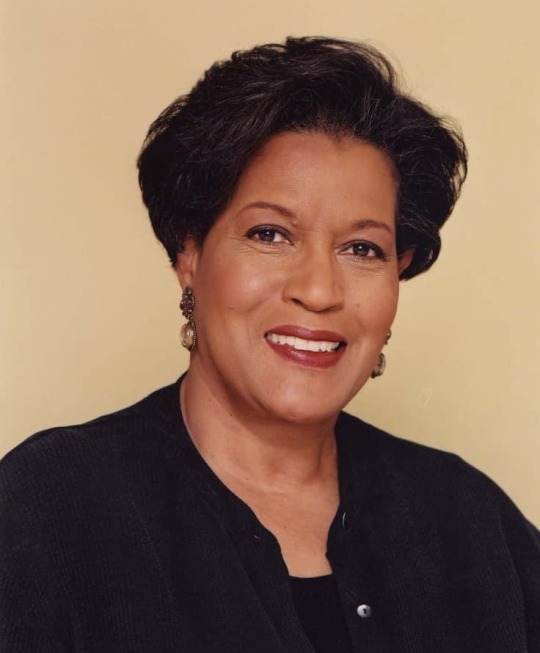
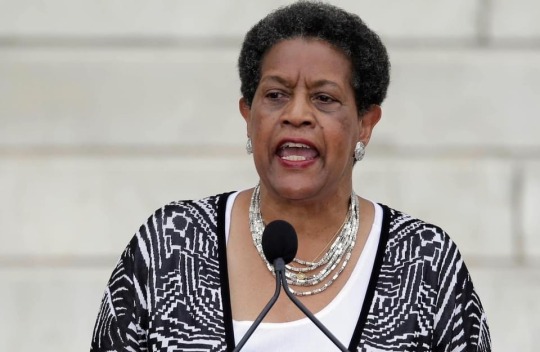

Black History Facts!!!
#Happy90th
#NAACP
Born Myrlie Louise Beasley on March 17, 1933, in her maternal grandmother’s home in Vicksburg, Mississippi. She was the daughter of James Van Dyke Beasley, a delivery man, and Mildred Washington Beasley, who was 16 years old. Myrlie’s parents separated when she was just a year old; her mother left Vicksburg but decided that Myrlie was too young to travel with her. Since her maternal grandmother worked all day in service, with no time to raise a child, Myrlie was raised by her paternal grandmother, Annie McCain Beasley, and an aunt, Myrlie Beasley Polk. Both women were respected school teachers and they inspired her to follow in their footsteps. Myrlie attended the Magnolia school, took piano lessons, and performed songs, piano pieces or recited poetry at school, in church, and at local clubs.
Myrlie graduated from Magnolia High School (Bowman High School) in 1950. During her years in high school, Myrlie was also a member of the Chansonettes, a girls’ vocal group from Mount Heroden Baptist Church in Vicksburg. In 1950, Myrlie enrolled at Alcorn A&M College, one of the few colleges in the state that accepted African American students, as an education major intending to minor in music. Myrlie is also a member of Delta Sigma Theta sorority. On her first day of school Myrlie met and fell in love with Medgar Evers, a World War II veteran eight years her senior. The meeting changed her college plans, and the couple later married on Christmas Eve of 1951. They later moved to Mound Bayou, and had three children, Darrell Kenyatta, Reena Denise, and James Van Dyke. In Mound Bayou, Myrlie worked as a secretary at the Magnolia Mutual Life Insurance Company.
When Medgar Evers became the Mississippi field secretary for the National Association for the Advancement of Colored People (NAACP) in 1954, Myrlie worked alongside him. Myrlie became his secretary and together they organized voter registration drives and civil rights demonstrations. She assisted him as he struggled to end the practice of racial segregation in schools and other public facilities and as he campaigned for voting rights many African Americans were denied this right in the South. For more than a decade, the Everses fought for voting rights, equal access to public accommodations, the desegregation of the University of Mississippi, and for equal rights in general for Mississippi's African American population. As prominent civil rights leaders in Mississippi, the Everses became high-profile targets for pro-segregationist violence and terrorism.
In 1962, their home in Jackson, Mississippi, was firebombed in reaction to an organized boycott of downtown Jackson’s white merchants. The family had been threatened, and Evers targeted by the Ku Klux Klan.
In 1967, after Byron De La Beckwith's release in 1965, she moved with her children to Claremont, California, and emerged as a civil rights activist in her own right. She earned her Bachelor of Arts in sociology from Pomona College. She spoke on behalf of the NAACP and in 1967 she co-wrote For Us, the Living, which chronicled her late husband's life and work. She also made two unsuccessful bids for U.S. Congress. From 1968 to 1970, Evers was the director of planning at the center for Educational Opportunity for the Claremont Colleges.
From 1973 to 1975, Evers was the vice-president for advertising and publicity at the New York-based advertising firm, Seligman and Lapz. In 1975, she moved to Los Angeles to become the national director for community affairs for the Atlantic Richfield Company (ARCO). At ARCO she was responsible for developing and managing all the corporate programs. This included overseeing funding for community projects, outreach programs, public and private partnership programs and staff development. She helped secure money for many organizations such as the National Woman’s Educational Fund, and worked with a group that provided meals to the poor and homeless.
Myrlie Evers-Williams continued to explore ways to serve her community and to work with the NAACP. Los Angeles mayor Tom Bradley appointed her to the Board of Public Works as a commissioner in 1987. Evers-Williams was the first black woman to serve as a commissioner on the board, a position she held for 8 years. Evers-Williams also joined the board of the NAACP. By the mid-1990s, the prestigious organization was going through a difficult period marked by scandal and economic problems. Evers-Williams decided that the best way to help the organization was to run for chairperson of the board of directors. She won the position in 1995, just after her second husband’s death due to prostate cancer. As chairperson of the NAACP, Evers-Williams worked to restore the tarnished image of the organization. She also helped improve its financial status, raising enough funds to eliminate its debt. Evers-Williams received many honors for her work, including being named Woman of the Year by Ms. Magazine. With the organization financially stable, she decided to not seek re-election as chairperson in 1998. In that same year, she was awarded the NAACP's Spingarn Medal.
Sources:
Padgett, John. "MWP: Myrlie Evers-Williams". University of Mississippi. Retrieved October 20, 2011
Goldsworthy, Joan. "Gale - Free Resources - Black History - Biographies - Myrlie Evers-Williams". Gale. Retrieved November 22, 2011.
Myrlie Evers-Williams Biography - Facts, Birthday, Life Story - Biography.com". Famous Biographies & TV Shows - Biography.com. A&E Television Networks. Retrieved November 22, 2011.
Davis, Merlene. "Merlene Davis: Myrlie Evers-Williams doesn't want us to forget". Kentucky.com. Retrieved November 22, 2011.
Jessie Carney Smith; VNR Verlag für die Deutsche Wirtschaft (1996). Notable Black American Women: book II. p. 208.
University of Virginia (June 24, 2013). "Speakers and Guests Bios". virginia.edu. Archived from the original on June 2, 2013.
28 notes
·
View notes
Text

June 23rd! One week from today! I’ll be competing in Art Battle Chicago at Spin.
Tickets and voter registration are open now! You can apparently use the code JORDAN for 20% off :P
All artwork completed in the art battle will also be on sale at the show via silent auction, in case you want a piece of the competition to take home with you.
See ya there~
10 notes
·
View notes
Text
By: Camile Paglia
Published: May 9, 2016
This paper is a modified version of a talk that was given at the Smart Set Forum: Free Speech on the College Campus on April 21, 2016 at Drexel University.
Our current controversies over free speech on campus actually represent the second set of battles in a culture war that erupted in the U.S. during the late 1980s and that subsided by the mid-1990s — its cessation probably due to the emergence of the World Wide Web as a vast, new forum for dissenting ideas. The openness of the web scattered and partly dissipated the hostile energies that had been building and raging in the mainstream media about political correctness for nearly a decade. However, those problems have stubbornly returned, because they were never fully or honestly addressed by university administrations or faculty the first time around. Now a new generation of college students, born in the 1990s and never exposed to open public debate over free speech, has brought its own assumptions and expectations to the conflict.
As a veteran of more than four decades of college teaching, almost entirely at art schools, my primary disappointment is with American faculty, the overwhelming majority of whom failed from the start to acknowledge the seriousness of political correctness as an academic issue and who passively permitted a swollen campus bureaucracy, empowered by intrusive federal regulation, to usurp the faculty’s historic responsibility and prerogative to shape the educational mission and to protect the free flow of ideas. The end result, I believe, is a violation of the free speech rights of students as well as faculty.
What is political correctness? As I see it, it is a predictable feature of the life cycle of modern revolutions, beginning with the French Revolution of 1789, which was inspired by the American Revolution of the prior decade but turned far more violent. A first generation of daring rebels overthrows a fossilized establishment and leaves the landscape littered with ruins. In the post-revolutionary era, the rebels begin to fight among themselves, which may lead to persecutions and assassinations. The victorious survivor then rules like the tyrants who were toppled in the first place. This is the phase of political correctness — when the vitality of the founding revolution is gone and when revolutionary principles have become merely slogans, verbal formulas enforced by apparatchiks, that is, party functionaries or administrators who kill great ideas by institutionalizing them.
What I have just sketched is the political psychobiography of the past 45 years of American university life. My premises, based on my own college experience at the dawn of the counterculture, are those of the radical Free Speech Movement that erupted at the University of California at Berkeley in the Fall of 1964, my first semester at the State University of New York at Binghamton. The Berkeley protests were led by a New York-born Italian-American, Mario Savio, who had worked the prior summer in a voter-registration drive for disenfranchised African-Americans in Mississippi, where he and two colleagues were physically attacked for their activities. When Savio tried to raise money at Berkeley for a prominent unit of the Civil Rights Movement, the Student Nonviolent Coordinating Committee, he was stopped by the university because of its official ban on political activity on campus.
The uprising at Berkeley climaxed in Savio’s fiery speech from the steps of Sproul Hall, where he denounced the university administration. Of the 4000 protestors in Sproul Plaza, 800 were arrested. That demonstration embodied the essence of 1960s activism: it challenged, rebuked, and curtailed authority in the pursuit of freedom and equality; it did not demand, as happens too often today, that authority be expanded to create special protections for groups reductively defined as weak or vulnerable or to create buffers to spare sensitive young feelings from offense. The progressive 1960s, predicated on assertive individualism and the liberation of natural energy from social controls, wanted less surveillance and paternalism, not more.
The entire political and cultural trajectory of the decades following World War II in the U.S. was a movement away from the repressions of the Cold War standoff with the Soviet Union, when the House Un-American Activities Committee of the U.S. House of Representatives searched for signs of Communist subversion in every area of American life. A conspicuous target was the Hollywood film industry, where many liberals had indeed been drawn to the Communist Party in the 1930s, before the atrocities of the Stalinist regime were known. To fend off further federal investigation, the major studios blacklisted many actors, screenwriters, and directors, some of whom, like a favorite director of mine, Joseph Losey, fled the country to find work in Europe. Pete Seeger, the leader of the politicized folk music movement whose roots were in the social activism of Appalachian coal-miners in the 1930s, was banned from performing on network TV in the U.S. in the 1950s and ‘60s.
There were sporadic landmark victories for free speech in the literary realm. In 1957, local police raided the City Lights Bookshop in San Francisco and arrested the manager and owner, Beat poet Lawrence Ferlinghetti, for selling an obscene book, Allen Ginsberg’s epic protest poem, Howl. After a long, highly publicized trial, Howl was declared not obscene, and the charges were dropped. The Grove Press publishing house, owned by Barney Rosset, played a heroic role in the battle against censorship in the U.S. In 1953, Grove Press began publishing affordable, accessible paperbacks of the voluminous banned works of the Marquis de Sade, a major thinker about sex and society at the close of the Enlightenment. In 1959, the Grove Press edition of D.H. Lawrence’s 1928 novel, Lady Chatterly’s Lover, then banned in the U.S., was confiscated as obscene by the U.S. Postal Service. Rosset sued and won the case on federal appeal. In 1961, the publication by Grove Press of another banned book, Henry Miller’s 1934 novel, Tropic of Cancer, led to 60 obscenity trials in the U.S. until in 1964 it was declared not obscene and its publication permitted.
One of the supreme symbols of newly militant free speech was Lenny Bruce, who with Mort Sahl transformed stand-up comedy from its innocuous vaudevillian roots into a medium of biting social and political commentary. Bruce’s flaunting of profanity and scatology in his improvisational onstage act led to his arrest for obscenity in San Francisco in 1961, in Chicago in 1962, and in New York in 1964, where he and Howard Solomon, owner of the Café Au Go Go in Greenwich Village, were found guilty of obscenity and sentenced to jail. Two years later, while his conviction was still under appeal, Bruce died of a drug overdose at age 40.
This steady liberalizing trend was given huge impetus by the sexual revolution, which was launched in 1959 by the marketing of the first birth control pill. In Hollywood, the puritanical studio production code, which had been adopted in the early 1930s under pressure from conservative groups like the Legion of Decency and the United States Conference of Catholic Bishops, was gradually breaking down and was finally abandoned by the late 1960s. The new standard of sexual expression was defined by European art films, with their sophisticated scripts and frank nudity. Pop music pushed against community norms: in 1956, Elvis Presley’s hip-swiveling gyrations were cut off by the TV camera as too sexual for the Ed Sullivan Show, which was then a national institution. As late as 1967, the Ed Sullivan Show was trying to censor the song lyrics of major bands like the Doors and the Rolling Stones, who were imitating the sexual explicitness of rural and urban African-American blues. (The Stones capitulated to Sullivan, but the Doors fought back — and were never invited on his show again.) Middle-class college students in the 1960s, including women, began freely using four-letter words that had rarely been heard in polite company, except briefly during the flapper fad of the 1920s. In the early 1970s, women for the first time boldly entered theaters showing pornography and helped make huge hits out of X-rated films like Deep Throat, Behind the Green Door, and The Devil in Miss Jones.
In short, free speech and free expression, no matter how offensive or shocking, were at the heart of the 1960s cultural revolution. Free speech was a primary weapon of the Left against the moralism and conformism of the Right. How then, we must ask, has campus Leftism in the U.S. been so transformed that it now encourage, endorses, and celebrates the suppression of ideas, including those that question its own current agenda and orthodoxy?
My conclusions are based on my personal observation as a career academic. Despite the longstanding claim by conservatives that “tenured radicals” invaded the universities in the 1970s, I maintain that no authentic 1960s radicals, except for Todd Gitlin, the president of SDS (Students for a Democratic Society), entered the profession and attained success. If they entered graduate school, most of them dropped out. To enter grad school at all was in fact viewed as a sell-out. For example, during my last semester in college in 1968, I was confronted near the fountain on the quad by the leader of the campus radicals, who denounced me for my plan to attend the Yale Graduate School. “Grad school isn’t where it’s happening!” he contemptuously informed me. “And if you go anywhere, you go to Buffalo!” As it happens, I had indeed applied to and been accepted at the State University of New York at Buffalo, where I would have happily worked with the psychoanalytic critic Norman Holland and the notorious Leftist critic, Leslie Fiedler, whose controversial 1960 masterwork, Love and Death in the American Novel, had had a huge influence on me. Indeed, Fiedler had just become a folk hero of the counterculture the year before, when police raided his Buffalo house and arrested him for drug possession, a disastrous incident that he would chronicle in his 1969 book, Being Busted. At any rate, I had chosen Yale because of its great library, which I sorely needed for my research, but my fellow student’s warning stung and shook me.
There can be no doubt that elite universities like the Ivy League at that period were in drastic need of reform. Their prevailing WASP (White Anglo-Saxon Protestant) style was not a hospitable climate for racial or ethnic minorities, including Jews and Italian-Americans. Medieval Anglo-Saxon was actually still a required first-year course for graduate students in English literature when I arrived at Yale in 1968. There had evidently just been a purge of gay male professors from the English department — it was rumored they had migrated up-country to all-female Smith College in Western Massachusetts. The English department had only one woman faculty member, a rather conservative medievalist. While women had been admitted to the graduate school for a century, undergraduate Yale College was still all-male and turned coeducational while I was there — which was a huge relief, because I was tired of being stared at like an exotic trespasser in the cavernous main reference room of Sterling Library. In my Anglo-Saxon class one day, the otherwise very affable young WASPy professor did a crass sexist stunt, also involving an ethnic slur against working-class Italian-Americans, that still shocks and disgusts me after all these years. We first-year students said nothing — there was no framework yet for critique or complaint.
To understand how political correctness was later able to sweep like a plague through U.S. humanities departments, it must be stressed that the prevalent approach to literature in Great Britain and the U.S. since the 1940s had been the New Criticism, which in its focus on textual explication minimized or totally excluded history and psychology. When Buffalo’s Leslie Fiedler, who grounded literature in both history and psychology, including sex, gave a lecture at Yale while I was there, not one professor from the English department attended. Fiedler’s insulting ostracism could not have been more obvious. Hard as it is to believe now, my doctoral dissertation, Sexual Personae, was the only dissertation on sex in the Yale Graduate School at the time. Asking questions about sex and gender was considered bad form. That, as well as my fervent interest in mass media and popular culture (which were regarded as frivolous), certainly complicated and nearly derailed my first search for a teaching job.
After the 1960s cultural revolution, it was clear that the humanities had become too insular and removed from social concerns and that they had to reincorporate a more historical perspective. There were many new subject areas of contemporary interest that needed to be added to the curriculum — sex and gender, film, African-American and Native American studies among them. But the entire humanities curriculum urgently demanded rethinking. The truly radical solution would have been to break down the departmental structure that artificially separated, for example, English departments from French departments and German departments. Bringing all literature together as one field would have created a much more open, flexible format to encourage interdisciplinary exploration, such as cross-fertilizations of literature with the visual arts and music. Furthermore, I wanted an authentic multiculturalism, a curriculum that affirmed the value and achievements of Western civilization but expanded globally to include other major civilizations, all of which would be studied in their chronological unfolding. Even though I am an atheist, I have always felt that comparative religion, a study of the great world religions over time, including all aspects of their art, architecture, rituals, and sacred texts, was the best way to teach authentic multiculturalism and achieve world understanding. Zen Buddhism was in the air in the 1960s as part of the legacy of the post-war Beat movement, and Hinduism entered the counterculture through the London scene, partly because of Ravi Shankar, a master of the sitar who performed at California’s Monterey Pop Festival in 1967.
However, these boundary-dissolving expansions were unfortunately not the route taken by American academe in the 1970s. Instead, new highly politicized departments and programs were created virtually overnight — without the incremental construction of foundation and superstructure that had gone, for example, into the long development of the modern English department. The end result was a further balkanization in university structure, with each area governed as an autonomous fiefdom and with its ideological discourse frozen at the moment of that unit’s creation. Administrators wanted these programs and fast — to demonstrate the institution’s “relevance” and to head off outside criticism or protest that could hamper college applications and the influx of desirable tuition dollars. Basically, administrators threw money at these programs and let them find their own way. When Princeton University, perhaps the most cloistered and overtly sexist of the Ivy League schools, went coeducational after 200 years in 1969, it needed some women faculty to soften the look of the place. So it hastily shopped around for whatever women faculty could be rustled up, located them mostly in English departments at second-tier schools, brought them on board, and basically let them do whatever they wanted, with no particular design. (Hey, they’re women — they can do women’s studies!)
I maintain, from my dismayed observation at the time, that these new add-on programs were rarely if ever founded on authentic scholarly principles; they were public relations gestures meant to stifle criticism of a bigoted past. In designing any women’s studies program, for example, surely a basic requirement for students should be at least one course in basic biology, so that the role of hormones in human development could be investigated — and rejected, if necessary. But no, both women’s studies and later gender studies evolved without reference to science and have thus ensured that their ideology remains partisan and one-dimensional, stressing the social construction of gender. Any other view is regarded as heresy and virtually never presented to students even as an alternative hypothesis.
Today’s campus political correctness can ultimately be traced to the way those new programs, including African-American and Native American studies, were so hastily constructed in the 1970s, a process that not only compromised professional training in those fields over time but also isolated them in their own worlds and thus ultimately lessened their wider cultural impact. I believe that a better choice for academic reform would have been the decentralized British system traditionally followed at Oxford and Cambridge Universities, which offered large subject areas where a student could independently pursue his or her special interest. In any case, for every new department or program added to the U.S. curriculum, there should have been a central shared training track, introducing students to the methodology of research and historiography, based in logic and reasoning and the rigorous testing of conclusions based on evidence. Neglect of that crucial training has meant that too many college teachers, then and now, lack even the most superficial awareness of their own assumptions and biases. Working on campus only with the like-minded, they treat dissent as a mortal offense that must be suppressed, because it threatens their entire career history and world-view. The ideology of those new programs and departments, predicated on victimology, has scarcely budged since the 1970s. This is a classic case of the deadening institutionalization and fossilization of once genuinely revolutionary ideas.
Let me give just one example of political correctness run amok in campus women’s studies in the U.S. In 1991, a veteran instructor in English and women’s studies at the Schuylkill campus of Pennsylvania State University raised objections to the presence in her classroom of a print of Francisco Goya’s famous late-18th-century painting, Naked Maja. The traditional association of this work with the Duchess of Alba, played by Ava Gardner in a 1958 movie called The Naked Maja, has been questioned, but there is no doubt that the painting, now owned by the Prado in Madrid, is a landmark in the history of the nude in art and that it anticipated major 19th-century works like Manet’s Olympia.
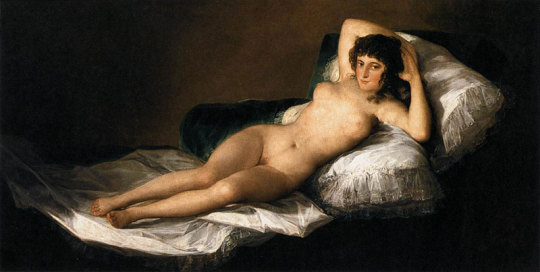
The instructor brought her case to a committee called the University Women’s Commission, which supported her, and she was offered further assistance from a committee member, the campus Affirmative Action officer, who conveyed her belief that there were grounds for a complaint of sexual harassment, based on the “hostile workplace” clause in federal regulations. The university, responding to the complaint, offered to change the teacher’s classroom, which she refused. She also refused an offer to move the painting to a less visible place in the classroom or to cover it while she was teaching. No, she was insistent that images of nude women must never be displayed in a classroom — which would of course gut quite a bit of major Western art since ancient Greece.
Finally, the Naked Maja was moved, along with four other classic art prints in the classroom, to the TV room of the student community center, where a sign was posted to alert unwary passerby that art was present — a kind of enter-at-your-own-risk warning. This action by the university seems to have been widely regarded as a prudent compromise instead of the shameful capitulation to political correctness that it was. There was a spate of amused publicity about the incident in the mainstream press, with criticism passingly voiced by prominent journalists like Nat Hentoff (a free speech warrior) and Robert Hughes, the longtime art critic of TIME magazine. But the response from within the teaching profession was strikingly weak and limited. This was a moment for independent thinkers everywhere in American academe to condemn that puritanical exercise by a literature instructor who had made herself a dictator in the visual arts, a field about which she was conspicuously uninformed. All that she had was a rote ideology absorbed from anti-porn fanatics like the crusading feminist Andrea Dworkin, whose attempt to ban the sale of pornography (including mainstream men’s magazines) in Minneapolis and Indianapolis had been struck down in federal district court in 1984 as an unconstitutional infringement of free speech rights. The instructor claimed that she was protecting future women students from the “chilly climate” created by the Naked Maja. But in a later published article about the controversy, she revealed that she herself was uncomfortable in the presence of the painting. She wrote, “I felt as though I were standing there naked, exposed and vulnerable.” I’m sorry, but we simply cannot permit uncultivated neurotics to set the agenda for arts education in America.
Here we come to one of the most pernicious aspects of identity politics as it reshaped the American university — the confusion of teaching with social work. The issue of improper advocacy in the classroom has never been adequately addressed by the profession. Teaching and research must strive to remain objective and detached. The teacher as an individual citizen may and should have strong political convictions and activities outside the classroom, but in the classroom, he or she should never take ideological positions without at the same time frankly acknowledging them as opinion to the students and emphasizing that all students are completely free to hold and express their own opinions on any issue, no matter how contested, from abortion, homosexuality, and global warming to the existence of God or the veracity of Darwin’s theory of evolution. Unfortunately, because of the failure of American colleges and universities to seek and support ideological diversity on their campuses, the humanities faculties have trended so far toward liberal Democrats (among whom I number myself) that they often seem naively unaware that any other beliefs are possible or credible.
The old-guard professors at the Yale Graduate School in the late 1960s may have been stuffy and genteel, but they were genuine scholars, passionately devoted to study and learning. They believed they had a moral obligation to seek the truth and to express it as accurately as they could. I remember it being said at the time that a scholar’s career could be ruined by fudging a footnote. A tragic result of the era of identity politics in the humanities has been the collapse of rigorous scholarly standards, as well as an end to the high value once accorded to erudition, which no longer exists as a desirable or even possible attribute in job searches for new faculty.
Another problem in 1970s academe was a job recession in the humanities that arose just as deconstruction and post-structuralism arrived from Europe. The deconstructionist trend started when J. Hillis Miller moved from Johns Hopkins University to Yale and began bringing Jacques Derrida over from France for regular visits. The Derrida and Lacan fad was followed by the cult of Michel Foucault, who remains a deity in the humanities but whom I regard as a derivative game-player whose theories make no sense whatever about any period preceding the Enlightenment. The first time I witnessed a continental theorist discoursing with professors at a Yale event, I said in exasperation to a fellow student, “They’re like high priests murmuring to each other.” It is absurd that that elitist theoretical style, with its opaque and contorted jargon, was ever considered Leftist, as it still is. Authentic Leftism is populist, with a brutal directness of speech.
Post-structuralism, in asserting that language forms reality, is a reactionary reversal of the authentic revolutionary spirit of the 1960s, when the arts had turned toward a radical liberation of the body and a reengagement with the sensory realm. By treating language as the definitive force in the world — a foolish thesis that could easily be refuted by the dance, music, or visual arts majors in my classes — post-structuralism set the groundwork for the present campus impasse where offensive language is conflated with material injury and alleged to have a magical power to create reality. Furthermore, post-structuralism treats history as a false narrative and encourages a random, fragmented, impressionistic approach that has given students a fancy technique but little actual knowledge of history itself.
The woeful decline in quality of humanities scholarship was quite obvious during the five years of research I did for my art book, Glittering Images, which was released four years ago. I chose 29 images extending over 3000 years since ancient Egypt and read through the major scholarly literature on each work of painting, sculpture, architecture, or film, beginning in the 19th century and continuing to the present. In the great period of German philology, writing about art had a tremendous range of both conception and detail. The impact of philology could be felt well into the 20th century, as in the work of the great Marxist art historian, Arnold Hauser, whose magisterial The Social History of Art, published in 1951, had a huge impact on me in graduate school. Writing on art remained strong through the 1960s but began to weaken with the impact of postmodernism and post-structuralism in the 1970s and ‘80s. From the 1980s on, I was shocked by the drop-off. Yes, there was the occasional specialist whose work was rigorous and reliable, but there was none of the broad learning and expansive vision of early 20th-century art historians like Aby Warburg, Heinrich Wölfflin, and Erwin Panofsky. Even worse, humanities books of the past two decades are suffering from shrinking bibliographies, where young academics are revealing that they have systematically consulted no books published before the 1980s.
The problem of political correctness is intensified by the increasing fixation of humanities and even history departments on “presentism,” that is, a preoccupation with our own modern period. Even the Renaissance is being redefined: it is now clumsily and in my view inaccurately called “Early Modern.” Presentism is even afflicting major museums, when they repair and over-restore ancient objects so that they look brand-new. A year ago, for example, in conjunction with my current research project into Native American culture of the late Ice Age, I visited the National Museum of the American Indian, a beautiful modernistic building on the Mall in Washington, D.C. I had very high expectations — hence my surprise and horror at how vapid and unscholarly the exhibits were. The entire museum looks like a glorified gift shop, stocked with glossy fabrications, poster-board displays, light shows, and annoying recordings of vacuous happy talk. After a long search, I finally found something old and authentic — a small, sad picture-frame display of a handful of genuine arrowheads and unremarkable stone tools from the Washington area. I have found far better artifacts right here in the plowed fields of Southeastern Pennsylvania! The worst crime of political correctness is that it has allowed current ideologies to stunt our sense of the past and to reduce history to a litany of inflammatory grievances.
To break through the stalemate and reestablish free speech on campus, educators must first turn away from the sprawling cafeteria menu of over-specialized electives and return to broad survey courses based in world history and culture, proceeding chronologically from antiquity to modernism. Students desperately need a historical framework to understand both past and present.
Second, universities should sponsor regular public colloquia on major topics where both sides of sensitive, hot-button controversies are fully discussed. Any disruptions of free speech at such forums must be met with academic sanctions.
Third, it is my position, stemming from the 1960s sexual revolution that ended campus parietal rules, that colleges and universities must stay totally out of the private social lives of students. The intrusive paternalism of American colleges in this area is an unacceptable infringement of student rights. If a crime is committed on campus, it must be reported to the police. There is no such thing as a perfectly “safe space” in real life. Risk and danger are intrinsic to human existence.
As tuition costs rose stratospherically over the past quarter century, American colleges and universities shifted into a consumerist mode and have now become more like shopping malls than educational institutions — they don’t want to upset the paying customers! But the entire college experience should be based on confronting new and disruptive ideas. Students must accept personal responsibility for their own choices and behavior, and university administrators must stop behaving like substitute parents and hovering therapists. The ultimate values at any university should be free thought and free speech.
#Camile Paglia#free speech#freedom of speech#academic freedom#academic corruption#paternalism#infantilism#political correctness#gender studies#womens studies#women's studies#grievance studies#religion is a mental illness
4 notes
·
View notes
Text

I posted 7,283 times in 2022
388 posts created (5%)
6,895 posts reblogged (95%)
Blogs I reblogged the most:
@clatterbane
@kelpforestdwellers
@katisconfused
@bluenorther
@kellyclowers
I tagged 5,374 of my posts in 2022
Only 26% of my posts had no tags
#art - 664 posts
#kept tags - 638 posts
#video - 626 posts
#cats - 455 posts
#politics - 407 posts
#long post - 380 posts
#food - 257 posts
#personal - 248 posts
#uk politics - 181 posts
#us politics - 168 posts
Longest Tag: 139 characters
#and it's absolutely fucking infuriating to see posts that are like 'everyone who is [catagory] was treated like ___ & therefore privileged'
My Top Posts in 2022:
#5
(via r/disability)
Though, as unsurprisingly already came up in the comments there? I would not necessarily say "ignore" without tacking on "willfully"--in a "not my circus, not my monkeys" sort of way driven by ableism.
95 notes - Posted February 24, 2022
#4
‘Life in a box’: young autistic man confined in hospital’s former file room | News | The Sunday Times
His sectioning is subject to a rolling review and he can be discharged at any time by the doctor in charge of his care. It means the Priory, a private company receiving large amounts of NHS funding for his care, is also in charge of deciding whether he is fit for release. There is no suggestion that Patient A’s funding has had an influence on his care plan at the hospital...
Patient A is stuck inside a system the government vowed to fix in 2011, after the abuse of adults with autism and severe learning disabilities was exposed by the BBC’s flagship investigations programme, Panorama...
In 2015 NHS England launched its Transforming Care programme, which aimed to reduce the number of autistic people and those with learning disabilities in mental health hospitals. But while the number of people with learning difficulties in hospitals has fallen, the number of autistic people in mental health hospitals has risen by 59 per cent since 2015 to 700 (autistic people only), according to NHS figures. When taking into account autistic people with and without learning difficulties, the figures have risen from 1,100 in 2015 to 1,215 today.
“People can deteriorate because the environment is not right for them and that can make their behaviour worse,” said Dan Scorer, Mencap’s policy expert...
Experts say that for those with autism, being confined in a unit such as Patient A’s exacerbates aggressive behaviour. As a result they become trapped in a vicious cycle of overmedication and ever more draconian restrictions on their liberty.
“People with autism can have sensory problems. They need the right space to live in. A nice garden. The correct lighting. A comfortable home,” says Alicia Wood, who has studied the effects of long-term segregation on people with autism and learning disabilities for the government’s oversight panel, led by Baroness Hollins.
Some are left “traumatised” after long-term inpatient care. Moving out can initiate a period of three to six months in which “their behaviour can be extremely challenging.”
108 notes - Posted January 10, 2022
#3

(Source | Context)

Everybody forgetting that Gen X exists yet again, with too many years' worth of exasperated snark to contribute! 😅
142 notes - Posted August 3, 2022
#2
PSA for people in Virginia:
More glitches at the DMV. Check your voter registration.
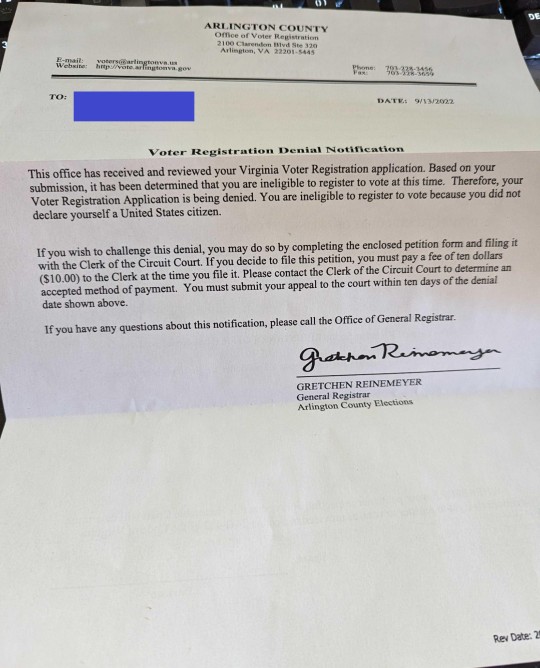

150 notes - Posted October 21, 2022
My #1 post of 2022

Speaking of the goat!
Free crochet pattern:
391 notes - Posted December 12, 2022
Get your Tumblr 2022 Year in Review →
#this try it didn't trap me in a freaking redirect loop#tumblr2022#year in review#my 2022 tumblr year in review#your tumblr year in review
5 notes
·
View notes